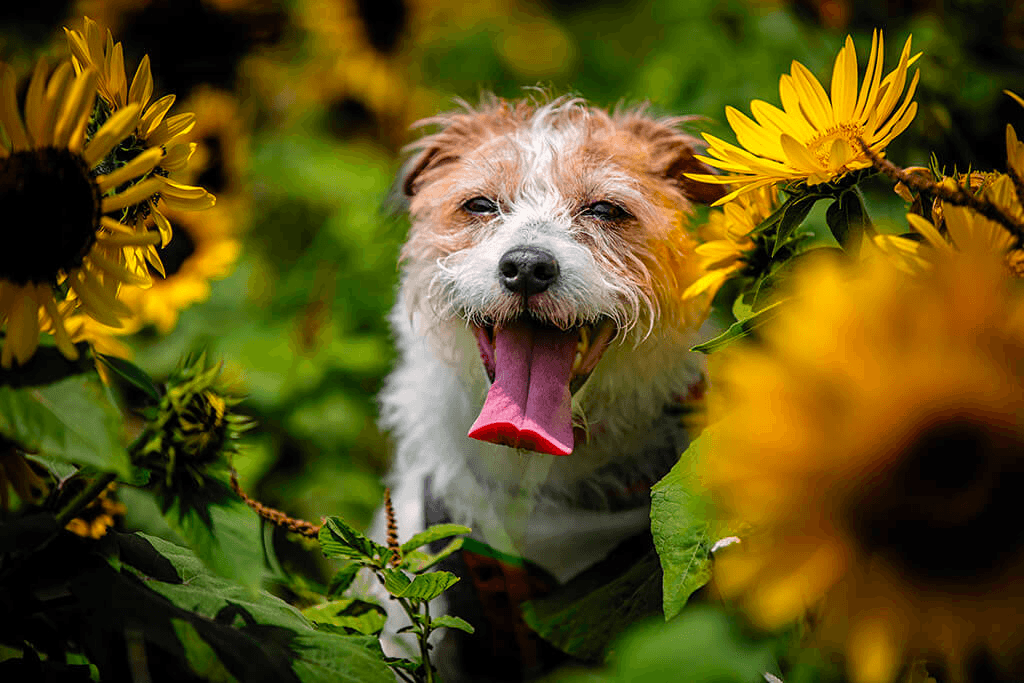Learn to identify dog allergy symptoms and discover practical solutions to help your furry friend. Read the article for essential pet care tips.
9 Dog Allergy Symptoms That You Shouldn’t Ignore

Just like humans, dogs can have allergies that make them itchy and uncomfortable or even impact their health more seriously. Whether it’s inflamed skin, digestive issues, or chronic ear infections, recognizing these dog allergy symptoms early can make a big difference in getting your pup the help they need.
In this article, we’ll break down the common signs of allergies in dogs and help you figure out what might be triggering them, from food and fleas to seasonal allergens. Plus, we’ll share some expert veterinary al tips on managing allergies so your furry friend can get back to feeling their best.
What Are Allergies in Dogs?
At its core, an allergy is your dog’s immune system going into overdrive when it comes into contact with something harmless, be it food, pollen, or a flea bite. This overreaction leads to all sorts of symptoms that can range from mildly annoying to seriously uncomfortable for your dog.
There are a few common types of allergies to watch for:
- Environmental allergies (like pollen, grass, or dust)
- Flea allergies (where one bite can cause intense itching)
- Contact allergies (from fabrics, chemicals, or even certain shampoos)
- Food allergies (certain proteins, like chicken or beef)
Dr. Lauryn Benson, Medical Director of Veterinary Emergency Group in Carle Place, NY notes that, while commonly seen in dogs, food allergies aren’t fully understood by vets. “We believe they can develop if there’s a problem with our pet’s immune system or health, but we don’t have enough research to understand this topic entirely,” she explains. (More on this below!)

9 Common Dog Allergy Symptoms
“Signs of allergies can have an extensive range,” says Dr. Benson. Many are dependent on what kind of allergies you’re dealing with, and some are more obvious than others.
If you’ve noticed any of these signs, it might be time to talk to your vet:
Itchy skin & excessive scratching
If your dog just can’t stop scratching, it might be due to an allergic reaction. Constant itching is one of the most common signs of allergies in dogs, especially when it’s accompanied by redness or rashes.
Redness, rashes, or hot spots
Skin irritation can show up as red patches, bumps, or painful “hot spots” (infected skin patches) that your dog keeps licking or scratching.
Chronic ear infections
Ear issues, especially if they keep coming back, can be a sign of a food allergy. If your dog’s ears are itchy, red, or smelly, it’s worth checking in with your vet.
Digestive issues
If your dog is having tummy troubles often, food allergies could be to blame. Vomiting, diarrhea, and excessive gas can sometimes stem from a certain ingredient not agreeing with your dog’s system.
Excessive paw licking or chewing
Dogs with allergies may obsessively lick or chew at their paws, often as a response to environmental allergens like pollen or grass.
Watery eyes or sneezing
Sneezing or watery eyes are often linked to seasonal allergies, especially during pollen-heavy months.
Hair loss or bald spots
Constant scratching or licking can lead to hair loss or bald patches, particularly around the base of the tail in the case of flea allergies.
Hives or swelling
Raised red bumps or swelling on your dog’s skin can indicate an allergic reaction, and this one might happen pretty quickly after exposure to the allergen.
Scooting
Yep, that classic dragging-the-butt-on-the-floor move can be a sign of allergies. “It’s been noted that sometimes food allergy pets can have anal gland issues repeatedly,” says Dr. Benson, highlighting this often overlooked symptom.
Types of Allergies and Their Specific Symptoms
Environmental Allergies
Environmental allergens such as pollen, grass, or dust mites can cause sneezing, watery eyes, or itchy skin. Dogs may also lick or chew their paws after exposure to these allergens. If you notice these symptoms occur seasonally, it could be related to environmental factors.
Flea Allergies
Some dogs are super sensitive to flea bites, and it only takes one to cause intense itching and redness. “Flea bites can [also] cause hair loss by your dog constantly scratching or licking the same spots while trying to alleviate the itchiness,” Dr. Benson adds. The red bumps or rashes from the bites can be particularly noticeable at the base of their tail and around their groin.
“Hair loss can also be triggered by parasites like mange,” Dr. Benson warns, “so it’s always best to take your pet to see a veterinarian if you’re concerned.”
Contact Allergies
If your dog comes into contact with something they’re allergic to — like certain fabrics or cleaning products — you might see skin irritation or hair loss. These symptoms can look a lot like other allergies, but if they show up out of the blue, you may be able to pinpoint something new your pup may have interacted with to cause the sudden flare-up.
Food Allergies
Food allergies in dogs typically show up as skin problems or digestive issues, such as chronic ear infections or gastrointestinal symptoms like vomiting or diarrhea.
Dr. Benson says chicken and beef are the top proteins that trigger food allergies. “About 17% of our food-allergic dogs are allergic to chicken, and beef is the most common at 34%,” she explains.
Identifying a food allergy is usually done through differential diagnosis — meaning ruling out all other causes before deciding it is, in fact, a food allergy — or through immune testing with your vet.

How Do I Know If My Dog Has Allergies?
So how do you figure out if your dog has allergies? Start by keeping an eye on their symptoms and when they occur. If your dog starts sneezing every spring or has stomach issues after meals, those could be important clues.
“The primary way that dogs exhibit allergies is on their skin,” Dr. Benson tells us. “You may see an increased amount of itching and redness. Breathing changes and coughing are less common but can also occur.”
Here are some steps to help identify if your dog has allergies:
- Observe symptoms and triggers – Watch your dog for recurring symptoms like itching, sneezing, or digestive issues, and note when and where they happen. Is your dog itchy after being outside? Does their vomiting follow certain meals?
- Keep a symptom diary – Track your dog’s symptoms over time. Make note of potential triggers, whether environmental (like pollen or grass) or food-related. Your vet can use this to find any patterns that might point them in the right direction of a trigger.
- Veterinary testing – Testing options include skin or blood tests to identify environmental allergens or elimination diets to pinpoint food allergies. “At the vet, several things need to be done, or ruled out, to diagnose allergies, and in particular, food allergies,” says Dr. Benson. “Usually, a food elimination or diet trial is done, along with treatments for skin infections.”
What to Do If Your Dog Has Allergy Symptoms
Once you suspect allergies, it’s time to get your vet involved. They can help figure out the cause and suggest a treatment plan.
- Consult your vet – A proper diagnosis is key. Your vet can recommend treatments based on the type of allergy your dog has.
- Allergy testing – Your vet might suggest allergy testing, like skin or blood tests for environmental allergens or an elimination diet for food allergies.
- Treatments – Depending on your dog’s allergies, treatment options include medications, topical ointments, or dietary changes (or a combo of the three). Antihistamines, steroids, creams, or shampoos can help manage the general itchy symptoms. If your vet thinks a food allergy is at play, switching to a hypoallergenic or limited-ingredient diet might be needed.
Preventing Allergies and Managing Chronic Cases
For dogs with chronic or seasonal allergies, managing symptoms and minimizing exposure is important to keep symptoms at bay. While you can’t always avoid allergens, here are some steps you can take to help:
- Regular grooming – Frequent baths and brushing can help remove allergens like pollen from your dog’s fur. Special shampoos can also help soothe irritated skin.
- Flea control – Flea prevention is crucial for dogs with flea allergies. Flea control products like topical treatments or oral medications can prevent flea bites and the symptoms that follow.
- Hypoallergenic diets – For dogs with food allergies, sticking to a vet-recommended hypoallergenic or limited-ingredient diet can help reduce flare-ups.
- Control indoor allergens – Use air filters and clean your dog’s bedding often to reduce dust, pollen, and other potential allergens in your home.
“The best way to combat allergies is to remove the allergen, but that’s not always possible,” Dr. Benson advises. She suggests pet parents try newer treatments like Apoquel and Cytopoint to help manage symptoms if avoiding the allergen isn’t an option.
Final Thoughts on Dog Allergy Symptoms
Catching allergy symptoms early and working with your vet to manage them can make a huge difference in your dog’s quality of life. Whether it’s a food allergy or seasonal flare-up, with the right care, your dog can enjoy a more comfortable, itch-free life.
If you’re ever unsure about your dog’s symptoms, don’t hesitate to reach out to your vet — they’re your best resource for keeping your pup happy and healthy!
Sources
- Benson, Lauryn. DVM. Personal interview.
- Allergies in Pets
- Pet Health Tips: Allergies
- Allergies in dogs and cats are nothing to sneeze at
- Atopic dermatitis (atopy)
- Pets Get Allergies Year-Round
 E
E



